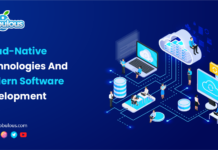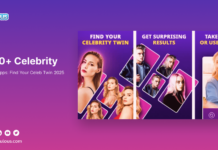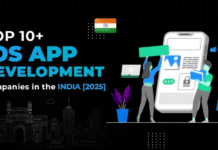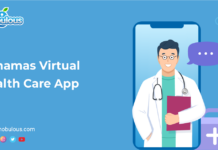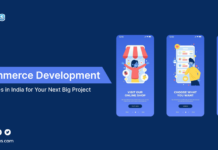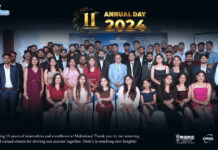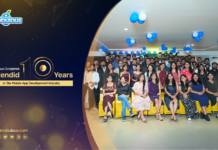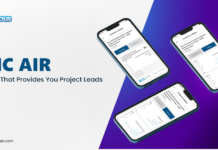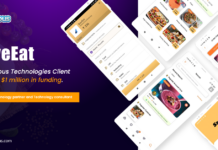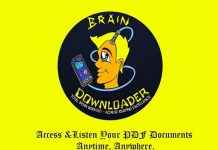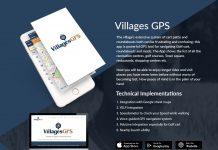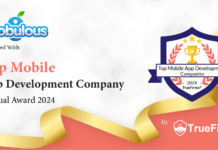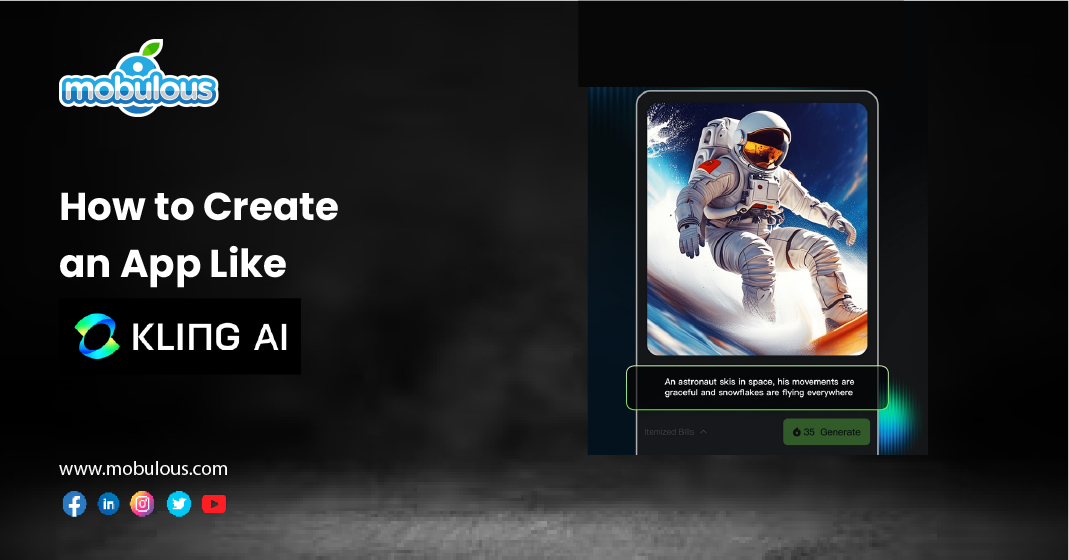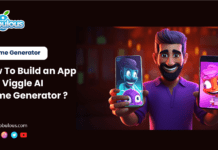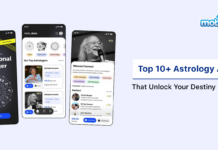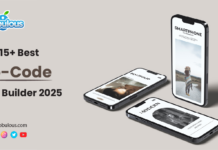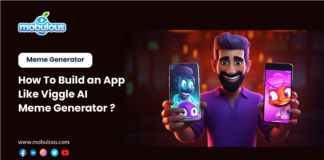Create an App Like Kling AI
Kling AI has revolutionized content creation with its groundbreaking AI-powered video generation technology, capturing global attention with remarkably lifelike video transformations.
As artificial intelligence continues to push boundaries, AI developers and entrepreneurs are eager to understand the complexities behind such ingenious platforms.
Let’s walk through the essential steps, strategic insights, and technological considerations required to create a compelling AI video generation app that can compete in the rapidly evolving digital landscape.
For Query:- Seek Help From a Mobile App Development Company!
What is Kling AI & What is Its Purpose?
Kling AI is a robust Artificial Intelligence (AI) application created by ByteDance that excels in generating hyper-realistic AI-powered video content.
Unlike traditional video creation tools, Kling AI leverages robust Machine Learning algorithms in order to transform text prompts into stunning and lifelike video sequences.
This allows users to create professional and top-quality videos with unparalleled creativity across various styles and scenarios.
For Query:- Seek Help From an AI/ML App Development Company
How to Create an App Like Kling AI
In order to create an app like Kling AI, you need to plan for it strategically, design the UI/UX, develop the front-end & back-end, test, deploy, monetize, and provide post-launch maintenance to it. Below are the comprehensive steps for AI-driven app development just like Kling AI that can help you stay ahead of the curve:
1. Planning Your App Like Kling AI
Building an AI-powered video generation app like Kling AI requires strategic planning, technological expertise, and a clear vision that transforms unique content production in the digital landscape. To plan your app, you need to define the purpose, identify the target audience, and conduct thorough market research.
A. Define the Purpose and Goals
Establishing a clear purpose is essential for your AI video generation app like Kling AI. Demonstrate whether you are targeting content creators, educators, marketers, or entertainment professionals.
Your app’s goals should focus on streamlining video creation that offers exceptional AI-driven features and provides strategic tools that differentiate your platform from existing solutions. Consider addressing specific key pointers in video production workflows.
Also Read:- What is Robotic Process Automation (RPA)? A Comprehensive Guide!
B. Identify the Target Audience
Understanding your target audience is fundamental to app development success. Examine potential user segments like social media content creators, small businesses, digital marketers, individual entrepreneurs, and educational institutions.
Research their specific needs, content creation challenges, technical expertise, and creative aspirations. Design features that directly address their requirements and simplify their video production processes.
C. Conduct Market Research
Comprehensive market research is crucial for creating a competitive AI chatbot app like Kling AI. Examine existing platforms, identify market gaps, study user feedback, evaluate technological trends, and identify market gaps.
Assess the strengths and weaknesses of your competitors, feature sets, pricing models, and user experience. Investigate emerging AI technologies, potential monetization strategies, and user preferences in order to build an exceptional value proposition.
2. Designing the User Interface (UI/UX)
Creating an accessible and user-friendly interface is essential for ensuring user retention, engagement, and satisfaction in an AI-powered app development like Kling AI. For this, you need to design a simple layout, user-friendly navigation, voice & gesture control, and set up accessibility features.
A. Simple and Intuitive Layout
Design a clean and minimalist interface that guides users seamlessly through the process of video creation. Enforce a logical workflow with clear visual hierarchies, simplified menu structures, and prominent action buttons.
Leverage intuitive icons, responsive design principles, and consistent action color schemes. Ensure that complex AI capabilities are presented in an approachable and non-technical manner that empowers users of all skill levels.
B. User-Friendly Navigation
Build a navigation system that enables smooth movement between different app features and video creation stages. Enforce clear and descriptive menu labels, contextual help options, and breadcrumb trails.
Create an intuitive dashboard that provides quick access to project management, editing tools, and template libraries. Design seamless transitions and provide visual feedback during user interactions.
C. Voice and Gesture Control
Integrate advanced voice and gesture control features in order to improve user interaction and accessibility. Enforce natural language processing for text-to-video prompts, enabling users to describe desired video content verbally.
Develop gesture recognition capabilities for touchscreen devices that allow immersive video editing and manipulation. Ensure these features are accurate, responsive, and provide alternative input methods.
D. Accessibility Features
Prioritize comprehensive accessibility in order to ensure your app is usable by individuals with diverse abilities. Enforce screen reader compatibility, adjustable text sizes, high-contrast mode, and keyboard navigation.
Support multiple languages, create alternative input methods, and provide detailed tooltips. Design color schemes and visual components that accommodate users with visual impairments while maintaining aesthetic appeal.
3. Developing the App Like Kling AI
Technical development is the heart of AI chatbot app development, like Kling AI, which requires advanced machine learning techniques and robust architectural design. For this, you need to develop the front-end & back-end, implement AI algorithms, train the AI model, and ensure data security & privacy.
A. Backend and Frontend Development
Build a robust and highly scalable architecture by using modern technologies that support complex AI processing. For the backend, consider using languages like Java, Python, or Node.js with frameworks like Flask or Django. Enforce microservices architecture in order to handle different app elements effectively.
On the front-end, leverage Vue.js, React, or Angular in order to create responsive or dynamic interfaces. Ensure seamless communication between front-end and back-end through well-designed APIs and effective data management protocols.
B. Implementing AI Algorithms
Design and integrate advanced AI algorithms capable of transforming text prompts into top-quality video content. Leverage robust machine learning frameworks like TensorFlow, Keras, or PyTorch for neural network app development.
Enforce deep learning models like Generative Adversarial Networks (GANs) and transformer architectures in order to generate realistic video sequences. Focus on building algorithms that can understand context, generate visually coherent and contextually accurate video content, and interpret complex prompts.
Also Read:- Ambient Intelligence: What is it?
C. Training the AI Model
Build a comprehensive training strategy for your AI model using comprehensive and diverse datasets. Gather top-quality video content across multiple domains that ensures representation and variety. Enforce transfer learning techniques in order to utilize pre-existing models and reduce training time.
Leverage data augmentation methods in order to improve model robustness and generalization. Create a consistent learning pipeline that enables periodic model updates, blending user feedback and emerging video generation techniques in order to enhance performance and accuracy.
D. Ensuring Data Security and Privacy
Enforce robust security measures in order to safeguard user data and AI model integrity. Create comprehensive encryption protocols for user-generated content and personal information. Enforce secure authentication mechanisms such as OAuth integrations and multi-factor authentication.
Build end-to-end data anonymization techniques to safeguard user privacy. Build clear data usage policies, provide transparent user controls, and ensure GDPR and other regulatory compliance for data management and consent.
4. Testing and Debugging
Rigorous and meticulous testing is crucial to ensure the reliability, user satisfaction, and performance of an AI-powered mobile app development like Kling AI. For this, you need to perform various testing protocols such as AI model accuracy testing, functional & performance testing, user experience testing, and beta testing & feedback integration.
A. AI Model Accuracy Testing
Conduct comprehensive testing in order to validate the AI model’s performance and accuracy across different scenarios. Build comprehensive test suites that assess the model’s ability to generate coherent and contextually relevant videos.
Enforce quantitative metrics like Fréchet Inception Distance, Inception Score, and human evaluation protocols. Create various test scenarios that cover diverse video styles, complexity levels, and content types in order to ensure reliable and robust AI performance.
B. Functional and Performance Testing
Implement comprehensive functional testing in order to verify all app features and user workflow. Build automated test scripts in order to check API integrations, user interaction flows, and video generation processes.
Perform load testing in order to assess the app’s performance under different user traffic conditions. Enforce performance monitoring tools in order to identify and fix issues and bugs. Ensure the app is able to handle concurrent users, maintain low latency, and provide consistent video generation capabilities.
C. User Experience Testing
Conduct end-to-end comprehensive user experience testing in order to assess the app’s intuitiveness, usability, and overall user satisfaction. Recruit different test groups representing diverse user personas and skill levels.
Gather qualitative feedback through user interviews, surveys, and usability testing sessions. Examine user interaction patterns, iterate on the UI/UX design, and identify possible friction points. Prioritize streamlining complex processes and improving user engagement.
D. Beta Testing and Feedback Integration
Launch a structured beta testing program in order to collect real-world insights and refine the app like Kling AI. Build a beta testing platform that enables controlled user access and comprehensive feedback collection.
Enforce robust feedback mechanisms such as in-app reporting, analytics tracking, and user surveys. Develop a systematic methodology in order to prioritize and enforce user suggestions. Set up a continuous improvement cycle that integrates user feedback into ongoing app development and AI model refinement.
5. Deploying the App Like Kling AI
Strategic app deployment across various platforms is essential for maximizing app accessibility, overall market penetration, and user reach. For this, you need to publish the app on App Stores, launch a web-based version, and perform marketing & promotion strategies.
A. Publishing on App Stores (Google Play, Apple App Store)
Navigate the complex app store submission process by meticulously preparing your app for Google Play Store and Apple App Store necessities. Build comprehensive app store listings with captivating descriptions, engaging preview videos, and top-quality screenshots.
Ensure compliance with platform-specific guidelines such as content policies, technical specifications, and privacy requirements. Prepare comprehensive metadata, create localized versions, and optimize keywords for discoverability in order to expand global reach. Handle possible review challenges proactively.
B. Launching a Web-Based Version
Build a highly responsive web app that provides a seamless alternative to mobile platforms. Leverage modern web technologies like Angular, React, or Vue.js in order to develop a cross-platform and responsive interface.
Enforce progressive web app (PWA) technologies in order to enable offline functionality and native-like experiences. Optimize server-side rendering for faster load times and enhanced performance.
Ensure a consistent user experience across diverse devices and browsers, providing an accessible alternative to native mobile apps.
Also Read:- Native vs. Hybrid vs. Web Apps: Best Mobile App Approach?
C. Marketing and Promotion Strategies
Create an end-to-end marketing methodology to generate awareness and drive app adoption. Utilize social media platforms, influencer partnerships, and content marketing in order to display exceptional AI video creation capabilities.
Develop captivating demo videos and case studies highlighting the app’s ingenious features. Enforce targeted digital advertising campaigns across multiple channels.
Build a content strategy that defines the app’s value proposition, such as tutorial videos, technical insights, and user testimonials. Leverage content marketing and SEO techniques.
6. Monetization Strategies of the App Like Kling AI
Creating a sustainable revenue model is crucial for long-term app success and continued innovation in the competitive AI video generation market. For this, you need to have a subscription-based model, a freemium model, in-app advertisements, and enterprise licensing.
A. Subscription-Based Model
Enforce a tiered subscription model offering diverse access levels and features. Design pricing tiers that cater to different user segments, from individual creators to professional teams.
Offer monthly and annual subscription options with incremental benefits like increased video generation limits, priority support, and advanced AI features. Include a free trial period to enable users to experience the application’s capabilities before committing to a paid plan.
B. Freemium Model
Develop a strategic freemium model that provides basic functionality while facilitating upgrades. Offer a robust free tier with limited video generation capabilities in order to attract initial users. Enforce feature restrictions that demonstrate the app’s potential while motivating users to upgrade.
Design premium features that provide significant value, including higher-quality video generation, extended AI capabilities, and advanced editing tools. Leverage in-app prompts and usage analytics in order to guide users toward paid upgrades.
C. In-App Advertisements
Build a non-intrusive advertising strategy that generates revenue without compromising user experience. Enforce targeted, contextually relevant advertisements from compatible brands and services.
Utilize rewarded video ads that offer users additional video creation credits or temporary feature access. Ensure ads are carefully integrated to maintain app usability and user satisfaction. Partner with ad networks specializing in creative and technology platforms. Provide clear opt-out mechanisms and transparent ad policies.
D. Enterprise Licensing
Build specialized enterprise licensing options for businesses and professional teams. Create custom pricing models that accommodate large-scale video creation requirements. Offer dedicated support, personalized AI training for enterprise clients, and improved security features.
Enforce volume-based pricing and flexible contract options. Provide additional value through API access, dedicated account management, and custom integrations. Design enterprise packages that manage specific industry necessities and workflow requirements.
7. Post-Launch Maintenance and Updates
Continuous improvement and proactive maintenance are crucial for sustaining app relevance, technological competitiveness, and user satisfaction. For this, you need regular updates and feature enhancements, user feedback analysis, bug fixes & performance optimization.
A. Regular Updates and Feature Enhancements
Set up a structured update cycle for consistent app improvement and feature expansion. Build a product roadmap that prioritizes user-focused features and technological enhancements. Enforce regular software updates in order to introduce the latest AI potential, enhance video creation quality, and handle the evolving user requirements.
Develop a transparent communication channel about upcoming features and enhancements. Utilize user feedback and technological trends to guide feature development and maintain app innovation.
B. User Feedback Analysis
Create a comprehensive user feedback collection and analysis system. Enforce various feedback channels such as in-app reporting, user interviews, and surveys. Leverage advanced analytics tools in order to track user behavior, satisfaction metrics, and feature usage.
Create a systematic methodology for categorizing and prioritizing user suggestions. Build a cross-functional team responsible for interpreting feedback and translating insights into actionable product enhancements. Maintain transparent communication and implement changes.
C. Bug Fixes and Performance Optimization
Enforce a proactive approach to identifying and resolving app issues. Build automated testing frameworks and continuous integration pipelines in order to detect potential bugs early. Leverage advanced monitoring tools to track app performance, prevent potential failures, and identify bottlenecks.
Develop a dedicated support team for rapid issue resolution. Maintain and handle comprehensive documentation of known issues and their solutions. Focus on performance optimization in order to ensure reliable and smooth video creation experiences.
Core Features to Include in an App Like Kling AI
Building an advanced Kling AI alternative app development requires integrating robust technological features that transform user creativity and interaction capabilities. Below are the key features that you should consider incorporating into your app like Kling AI:
1. Natural Language Processing (NLP)
Natural Language Processing (NLP) allows the application to understand and interpret advanced user text prompts with remarkable accuracy. This feature enables users to generate video content by simply describing their desired output in natural language.
The NLP system breaks down text inputs, translates user intentions into precise video generation instructions, and extracts contextual meaning, thus bridging the gap between AI-driven content creation and human communication.
2. Machine Learning Capabilities
Machine Learning capabilities form the core intelligence of the app, allowing for consistent enhancement and adaptive video generation. The feature enables the AI to learn from each user interaction, refining its understanding of visual context, content generation techniques, and style preferences.
Through advanced neural networks, the system is able to generate increasingly advanced and personalized video content that adapts to diverse user necessities and creative intentions.
3. Voice Recognition and Commands
Voice recognition and commands provide users with hands-free and intuitive interaction methods for video generation, enabling users to describe video concepts, handle content creation, and control app functions verbally through advanced speech-to-text technologies.
By supporting various languages and accents, the voice recognition system ensures accessibility and provides a natural interface for users to interact with the AI-powered video generation platform.
4. Chatbot and Virtual Assistant Features
Chatbot and Virtual Assistant features offer intelligent and context-aware guidance throughout the video creation process. This feature provides real-time suggestions, creative recommendations to users, and troubleshooting assistance.
The AI-powered assistant can help users refine their video concepts, provide step-by-step guidance, and suggest enhancements that make complex video generation more approachable for users with different levels of technical expertise.
5. Integration with IoT and Smart Devices
Integration with IoT or Internet of Things and smart devices expands the app’s functionality across devices and platforms. This feature enables smooth video generation and content sharing across smart TVs, smartphones, tablets, and other connected devices.
Users can initiate video projects, manage content synchronization, and receive notifications effortlessly, creating a unified ecosystem that supports flexible and multi-device content development and consumption.
The Right Tech Stack for Creating an App Like Kling AI
Selecting the optimal technology stack is highly essential for creating a robust, high-performance, and scalable AI chatbot app like Kling AI that can compete in the rapidly evolving digital landscape. Below is the robust tech stack required for the development of an app like Kling AI:
1. Programming Languages (Python, Java, Swift)
- Python: Python is a primary language for AI and machine learning development, offering extensive libraries and frameworks for complex algorithmic processing.
- Java: Java provides robust backend development capabilities with strong performance and scalability.
- Swift: Swift is ideal for developing high-performance iOS applications with native integration and optimized user experiences.
2. AI and Machine Learning Libraries (TensorFlow, PyTorch)
- TensorFlow: TensorFlow is Google’s open-source library providing comprehensive tools for building and training neural networks, supporting complex deep learning models.
- PyTorch: PyTorch is Facebook’s dynamic computational graph library, offering flexibility in developing and experimenting with advanced machine learning architectures.
- Keras: Keras is a high-level neural network library that simplifies model development and supports multiple backend implementations.
3. Cloud Platforms (AWS, Google Cloud, Azure)
- AWS (Amazon Web Services): AWS offers scalable cloud infrastructure with comprehensive AI and machine learning services.
- Google Cloud Platform: Google Cloud Platform provides advanced machine learning tools and global network infrastructure.
- Microsoft Azure: Microsoft Azure delivers robust cloud computing resources with strong AI and cognitive service integrations.
4. Database Management (MongoDB, Firebase)
- MongoDB: MongoDB is a NoSQL database offering flexible, scalable document storage for complex AI-generated content metadata.
- Firebase: Firebase is a real-time database solution providing seamless synchronization and user authentication capabilities.
- PostgreSQL: PostgreSQL is a robust relational database supporting complex queries and data relationships.
How Much Does it Cost to Build an AI App Like Kling AI?
Kling AI clone app development generally costs around USD 15,000 to USD 200,000, depending on the level of complexity, features, and app development methodology. However, this pricing range differs as per the expertise of the AI app development company and technological sophistication.
Certain factors like advanced machine learning capabilities, integration depth, and user interface complexity significantly affect the overall investment required.
Also Read:- How Much Does Software Development Cost in 2025?
Challenges and Solutions in Kling AI App Development
When you create an advanced Kling AI technology for mobile apps, you will face complex technological, ethical, and user experience challenges that require innovative solutions. The table below will help you understand them in a better way:
| Challenges | Solutions |
| 1. Data Privacy Concerns | Implement robust encryption, transparent data policies, and user-controlled privacy settings to protect sensitive information and build trust. |
| 2. AI Bias and Fairness | Develop comprehensive bias detection algorithms, diverse training datasets, and ongoing ethical review processes to ensure balanced content generation. |
| 3. Computational Complexity | Utilize advanced edge computing, optimized machine learning models, and distributed computing architectures to manage processing demands efficiently. |
| 4. User Experience Complexity | Design intuitive interfaces with AI-assisted guidance, interactive tutorials, and adaptive learning mechanisms to simplify complex video generation processes. |
| 5. Rapid Technological Changes | Establish agile development frameworks, continuous learning pipelines, and flexible architectural designs to adapt quickly to emerging technologies. |
| 6. Content Quality Consistency | Implement multi-stage validation processes, advanced quality assessment algorithms, and user feedback integration to maintain high content standards. |
| 7. Scalability Limitations | Develop microservices architecture, cloud-native solutions, and elastic computing strategies to support growing user bases and computational needs. |
| 8. Intellectual Property Concerns | Create robust content attribution systems, usage tracking mechanisms, and clear legal frameworks for AI-generated content ownership. |
| 9. Cross-Platform Compatibility | Design responsive, adaptive interfaces and develop comprehensive API integrations to ensure seamless performance across diverse devices and platforms. |
| 10. Ethical Content Generation | Establish comprehensive content guidelines, implement advanced content filtering algorithms, and develop transparent AI decision-making processes. |
Final Thoughts
Developing an app like Kling AI represents a transformative journey at the intersection of AI or Artificial Intelligence, user innovation, and creative technology.
While challenging, the potential to revolutionize digital content development offers unparalleled opportunities for AI app developers willing to push the technological boundaries and re-imagine video generation.
If you are inspired to bring your AI video generation app, like Kling A,I to life and need expert assistance, then make sure to contact Mobulous. Our team is ready to discuss your project and take the first step towards creating the next breakthrough in AI-powered app development.
FAQ’s — Create a Kling AI App
Q. What makes Kling AI’s technology unique?
Ans. Kling AI stands out due to its advanced machine learning algorithms that transform text prompts into hyper-realistic video content. The technology leverages deep learning models, sophisticated natural language processing, and generative AI to create contextually accurate and visually compelling videos with unprecedented precision and creative flexibility.
Q. How long does it take to develop an AI video generation app?
Ans. Developing an AI video generation app typically takes 6 to 12 months, depending on complexity and feature set. The development timeline includes initial research, AI model training, backend and frontend development, testing, and iterations. Factors like team expertise, technological sophistication, and resources significantly impact the overall development duration.
Q. What is the estimated budget for creating an AI video generation app?
Ans. The budget for developing an AI video generation app ranges from USD 15,000 to USD 200,000. Costs depend on factors like development team expertise, AI model complexity, feature integration, design sophistication, and ongoing maintenance requirements. Professional development teams and advanced AI capabilities contribute to higher investment levels.
Q. What programming languages are best for AI video generation apps?
Ans. Python leads in AI app development due to its extensive machine learning libraries and robust ecosystem. Java offers excellent backend capabilities, while Swift is ideal for iOS development. Combining these languages provides comprehensive coverage for AI model development, backend infrastructure, and native mobile application creation.
Q. How complex is training an AI model for video generation?
Ans. Training an AI video generation model is highly complex, requiring extensive computational resources, massive, diverse datasets, and advanced machine learning techniques. The process involves developing neural networks, implementing generative adversarial networks (GANs), continuous model refinement, and sophisticated training algorithms to achieve realistic and contextually accurate video generation.
Q. What are the primary challenges in developing an AI video generation app?
Ans. Primary challenges include managing computational complexity, ensuring data privacy, mitigating AI bias, maintaining consistent content quality, and creating intuitive user experiences. Technical obstacles involve developing sophisticated AI algorithms, managing computational resources, addressing ethical considerations, and continuously adapting to rapidly evolving technological landscapes.
Q. How can developers ensure the ethical use of AI in video generation?
Ans. Developers can ensure ethical AI use by implementing comprehensive content guidelines, developing advanced filtering algorithms, maintaining transparency in AI decision-making processes, protecting user privacy, preventing potential misuse, and creating robust content attribution systems. Regular ethical audits and user consent mechanisms are crucial.
Q. What marketing strategies work best for AI video generation apps?
Ans. Effective marketing strategies include creating compelling demo videos, leveraging social media platforms, developing targeted digital advertising campaigns, partnering with content creators and influencers, showcasing unique AI capabilities, providing free trials, and highlighting the app’s innovative features. Content marketing and user testimonials are particularly powerful.
Q. How important is user feedback in improving an AI video generation app?
Ans. User feedback is crucial for continuous improvement, helping developers refine AI algorithms, enhance user experience, identify feature gaps, and adapt to evolving user needs. Implementing systematic feedback collection, analysis, and integration ensures the app remains competitive, user-centric, and technologically advanced.
Q. What future trends should developers consider in AI video generation?
Ans. Developers should focus on trends like hyper-personalized content generation, real-time collaborative creation, emotion-aware AI, extended reality integration, ethical AI practices, multi-modal content generation, and decentralized computing. Staying ahead of technological advancements and user expectations is key to creating innovative and competitive AI video generation applications.

